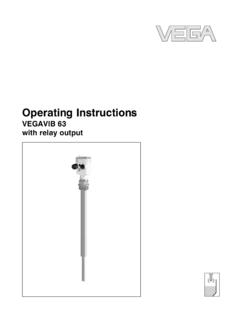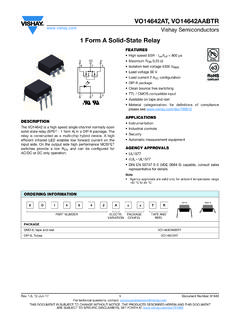Transcription of Principles of Relay Pump Operations - LA County Firefighters
1 Principles of Relay Pump Operations Driver/Operator 1B. September 2003 Slide 5-5-1. Relay Pumping Principles Relay 2+ pumpers move water from distances that would require excessive pressures if only one pumper is employed Relay operation 2+ pumpers move water over a long distance by operating them in series Driver/Operator 1B. September 2003 Slide 5-5-2. Relay Pumping Principles Water discharged from one pumper flows through hoses to the inlet of the next pumper, and so on Purpose To boost inadequate water pressure over an extensive distance from source to incident Driver/Operator 1B. September 2003 Slide 5-5-3. Apparatus Relay Principles Source pumper Apparatus connected to the actual water source Relay pumper (in-line pumper).
2 Pumper(s) connected within a Relay Receives water from the source pumper Boosts the water pressure and supplies water to the next in-line pumper or attack pumper Driver/Operator 1B. September 2003 Slide 5-5-4. Apparatus Relay Principles Attack pumper Pumper located at the incident scene Receives water from the in-line pumpers Supplies water to the appliances necessary for suppression Determining maximum Relay capacity Limited to the capacity of the smallest pump Limited to smallest hoseline used within the Relay Driver/Operator 1B. September 2003 Slide 5-5-5. Relay Pumping Operations Maximum distance Relay Involves flowing predetermined volume of water for the maximum distance Driver/Operator 1B.
3 September 2003 Slide 5-5-6. Chart Used to determine maximum pumping distance through a particular hose lay Based upon 20 psi residual pressure available at next, in-line pumper Discharge pressure of 200 psi for 2 " and 3" hose Discharge pressure of 185 psi for 4" and 5" hose Driver/Operator 1B. September 2003 Slide 5-5-7. Relay Pumping Operations Minimum pump capacities based on maximum distance Relay charting Flows needed: Pump capacity required 250/500 gpm flows: 750 gpm rated 750 gpm flow: 1,250 gpm rated 1,000 gpm flow: 1,500 gpm rated 1,250 gpm flow: 1,750 gpm rated Driver/Operator 1B. September 2003 Slide 5-5-8. Equation U.
4 Relay distance + 1 = Total pumpers MDR. Example 2,000. 1,600= +1= or 3 pumpers Round up to nearest whole number Driver/Operator 1B. September 2003 Slide 5-5-9. Constant Pressure Relay Establishes maximum flow available from a particular Relay setup By using a constant pressure in the system Driver/Operator 1B. September 2003 Slide 5-5-10. Constant Pressure Relay Advantages Speeds Relay activation Requires no complicated calculations Reduces radio traffic Can govern hoselines with greater ease Can guide and adjust pressure to one constant figure Driver/Operator 1B. September 2003 Slide 5-5-11. Constant Pressure Relay Formation Attack pumper at the fire Largest capacity pumper at the source Pump 175 psi from the water source Driver/Operator 1B.
5 September 2003 Slide 5-5-12. Constant Pressure Relay Formation Relay pumper pumps 175 psi to next pumper in line Each successive driver/operator follows the same procedure Attack pumper driver/operator adjusts the discharge pressure(s). to supply the attack line(s). Driver/Operator 1B. September 2003 Slide 5-5-13. Constant Pressure Relay Formation Maintain the flow from the attack pumper during temporary shutdowns For a ruptured hoseline, open a discharge gate on the Relay pumper before the rupture to dump water until line is replaced Driver/Operator 1B. September 2003 Slide 5-5-14. Constant Pressure Relay Formation PDP at 175 psi until Intake pressure drops below 20 psi Constant pressure of 175 psi may be modified Increase for greater spacing Decrease for lesser spacing Severe elevation differences Increase fire flow Large diameter hose Driver/Operator 1B.
6 September 2003 Slide 5-5-15. Relay Pressure Adjustment Increase Adjust source pumper until desired pressure is reached Adjust successive pumper similarly Decrease Relay pressure Attack pumper throttles down Open dump line Relay pumpers toward the water source, in decreasing succession Driver/Operator 1B. September 2003 Slide 5-5-16. Operational Considerations Basis for Relay operation Amount of water required at scene distance from scene to water source Methods to increase flow Size of hoselines Number of hoselines PDP of the pumpers Number of pumpers Driver/Operator 1B. September 2003 Slide 5-5-17. General Rules Operation always begins with the source pumper Largest diameter hose should be used at the beginning of the Relay Driver/Operator 1B.
7 September 2003 Slide 5-5-18. General Rules Once water has been established, source pumper opens uncapped discharge or allows water to waste through dump line until first Relay pumper is ready for water Relay pressure not to exceed maximum operating pressure rating for the hose Elevation pressures Driver/Operator 1B. September 2003 Slide 5-5-19. Placing a Relay Into Operation Largest capacity pumper at the source Source and Relay pumper ready for water Discharge supply hoseline on source pumper is opened Valve on dump line is closed in conjunction Maintain intake pressure of 20 psi Driver/Operator 1B. September 2003 Slide 5-5-20.
8 Placing a Relay Into Operation Receiving water at the attack pumper Bleed out air from the supply line Open bleed valve on intake being used Open discharge Close dump line Once water is flowing Set automatic pressure control Driver/Operator 1B. September 2003 Slide 5-5-21. Placing a Relay Into Operation Relay operation shutdown Shutdown from the fire scene first Driver/operators should shut down in succession Slowly decrease the throttle Open the dump line Take pump out of gear Driver/Operator 1B. September 2003 Slide 5-5-22.












